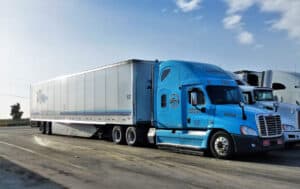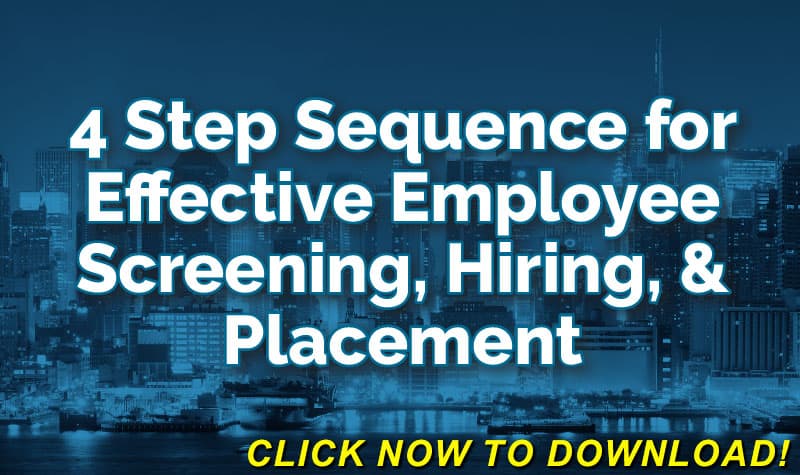
Whether the trucking company is a common carrier, private carrier, inter-modal carrier, hauler of hazardous cargo, moving van company, dump truck company or logging company, the most efficient way to influence the cost of workers compensation is an established safety program. Here are ten safety program recommendations trucking companies can consider. It is not intended to be a complete, all-encompassing list of required safety steps for the industry, but is an overview of some key steps. (WCxKit)
Click Link to Access Free PDF Download
“Workers’ Comp Claims Review Checklist: 9 Must-Have, Serious-Impact Elements”
- Written Accident Prevention Plan
Your safety program must be more than telling the drivers to “drive safely.” Your accident prevention plan must be a written, comprehensive manual provided to each and every driver. Drivers must be tested on their knowledge of your company safety requirements.The written safety plan outlines — Required pre-hire training a driver must have:- Safety training a driver will be required to complete while employed.
- Frequency and location of safety meetings.
- Red flags. Those safety violations causing driver discipline or termination.
- Company policy on hours of operation.
- Steps to check the safety of the equipment.
- Employer drug testing policy.
- Accident investigation program.
- Post-accident retraining policy.
- Safe driver recognition program.
None of these points may be omitted.
- Driver Training
With the shortage of qualified truck drivers, especially long-haul drivers, you must establish a policy on whether or not the company hires only experienced drivers, will train your own driver recruits, or will utilize a truck driving school for driver training. Regardless of the experience level of the truck drivers you hire, all drivers must be skill tested to verify they can operate the trucks in a safe and careful manner. A trainer/instructor rides with each new hire until the trainer is satisfied the new driver operates the truck in accordance to all established safety guidelines. - Safety Meetings
Required safety meetings should be held at least monthly to review a safety topic. The agenda can vary and include: accident prevention, equipment safety, fatigue management, etc. Hold the safety meetings at your terminal(s) to ensure maximum participation. Record each safety meeting for those drives unable to attend the safety meetings, and make the viewing of the material required. - Red Flags
Make the avoidance of risky behavior a condition of employment at your company. Place on probation drivers cited for speeding or other moving violations. Terminate drivers receiving multiple traffic violations. Monitor other driving behaviors such as leaving the designated route, complaints from the general public, unusual acceleration/deceleration, and failure to maintain proper logs. - Fatigue Control
Long haul drivers, especially those paid by the mile, are often tempted to push the limits of their physical endurance. Strict policies need to be in place to ensure the drivers meet the minimum Department of Transportation (DOT) requirements for rest. Consider other limitations on the number of hours or miles driven such as late night operations. Drivers operating trucks from mid-night to dawn have a disproportionate number of accidents per million miles than drivers who drive during day. - Equipment Checks
Require every driver to check the truck before beginning a trip. Inspections include tires, brakes, hydraulics, lights, wipers; .any part where failures would endanger the driver and the equipment. Equipment and parts not operating correctly must be replaced before the trip begins. - Drug Testing
A drug testing policy is an absolutely essential requirement for a trucking company. Administer both a pre-employment drug test as well as random drug testing. Schedule random drug testing often enough to so the potential for getting caught deters drug use.State clearly in the company’s employment policy “a driver testing positive for drugs will be terminated.” The risk to the company is too great to have a driver operating a truck while under the influence of drugs or alcohol. Administer a drug test immediately when any driver is involved in an accident, regardless of whether or not the driver is injured. - Accident Investigation
As most accidents can be prevented, investigate every accident to determine its cause. While driver inattention is the primary cause of accidents, other factors can play a role including weather, equipment condition, and actions of other vehicle operators. By identifying what caused the accident, post accident retraining will better benefit the driver. - Post Accident Retraining
Provide additional safe driving training to any driver involved in a traffic accident to reduce the potential for future accidents. The drivers involved in accidents can also be given competency testing to verify their knowledge of how to operate safely. (WCxKit) - Safe Driver Recognition
Recognize drivers who compile safe driving and reward them. Drivers who operate their equipment for a year without an accident or traffic citation may receive a plague and/or an additional cent per mile, or other tangible recognition. Long-haul drivers who reach the quarter million mile mark, the half million mile mark, and the million mile mark without an accident may receive progressively larger bonuses. Use part of the monthly safety meeting to recognize these safe drivers.
Note: Do not use this information without independent verification.
Author Rebecca Shafer, JD, President of Amaxx Risks Solutions, Inc. is a national expert in the field of workers compensation. She is a writer, speaker, and website publisher. Her expertise is working with employers to reduce workers compensation costs, and her clients include airlines, healthcare, printing/publishing, pharmaceuticals, retail, hospitality, and manufacturing. See www.LowerWC.com for more information. Contact: RShafer@ReduceYourWorkersComp.com.
Do not use this information without independent verification. All state laws vary. You should consult with your insurance broker or agent about workers comp issues.
©2011 Amaxx Risk Solutions, Inc. All rights reserved under International Copyright Law. If you would like permission to reprint this material, contact Info@ReduceYourWorkersComp.com

















Can it be possible that these companies also give 3pl services?
this is great information i would like to get more. Can you please send me more on these.
These are some great safety features for any truck company. I like how you talked about having mandatory safety meetings every month or so. That would be a great way to keep the drivers safe on the road, I think!
It’s important for every company to know how to keep their employee safe. By safety programs, it will help a lot for every driver that will hit the road. Also, with this you’ll be able to know the capability of your employee. It is also highly recommended as for trucking has a long day period of traveling.